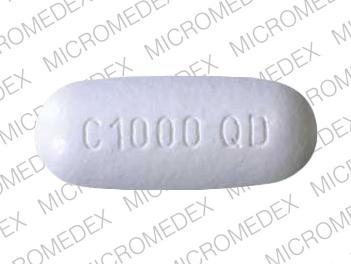Cipro XR Dosage
Generic name: CIPROFLOXACIN 212.6mg, CIPROFLOXACIN HYDROCHLORIDE 287.51
Dosage form: tablet, film coated, extended release
Drug class: Quinolones and fluoroquinolones
Medically reviewed by Drugs.com. Last updated on Jul 17, 2023.
Dosage
CIPRO XR and ciprofloxacin immediate-release tablets are not interchangeable. Cipro XR should be administered orally once daily (Table 1).
|
Indication |
Dose |
Frequency |
Usual Duration |
|
Uncomplicated Urinary Tract Infection (Acute Cystitis) |
500 mg |
every 24 hours |
3 Days |
|
Complicated Urinary Tract Infection and Acute Uncomplicated Pyelonephritis |
1000 mg |
every 24 hours |
7–14 Days |
Patients whose therapy is started with CIPRO IV for UTIs may be switched to CIPRO XR when clinically indicated at the discretion of the physician.
Administration
- •
- CIPRO XR tablets should be taken whole and not split, crushed, or chewed.
- •
- CIPRO XR should be administered at least 2 hours before or 6 hours after antacids containing magnesium or aluminum, polymeric phosphate binders (for example, sevelamer, lanthanum carbonate), as well as sucralfate, VIDEX® (didanosine) chewable/buffered tablets or pediatric powder, other highly buffered drugs, metal cations such as iron, and multivitamin preparations with zinc [see Drug Interactions (7)].
- •
- Concomitant administration of Cipro XR with dairy products (like milk or yogurt) or with calcium-fortified products alone should be avoided since decreased absorption is possible. A 2-hour window between substantial calcium intake (greater than 800 mg) and dosing with CIPRO XR is recommended [see Patient Counseling Information (17)].
- •
- Adequate hydration of patients receiving CIPRO XR should be maintained to prevent the formation of highly concentrated urine. Crystalluria has been reported with quinolones [see Warnings and Precautions (5.17), Adverse Reactions (6.1) and Patient Counseling Information (17)].
Impaired Renal Function
- •
- In patients with cUTI and acute uncomplicated pyelonephritis with a creatinine clearance of ≤ 30 mL/min, the dose of CIPRO XR should be reduced from 1000 mg to 500 mg daily. The use of Ciprofloxacin 1000 mg XR tablets is not recommended in this patient population.
- •
- For patients on hemodialysis or peritoneal dialysis, administer CIPRO XR after the dialysis procedure is completed (maximum dose should be Ciprofloxacin 500 mg XR every 24 hours). The use of Ciprofloxacin 1000 mg XR is not recommended in this patient population [see Use in Specific Populations (8.6) and Clinical Pharmacology (12.3)].
- •
- For patients on continuous ambulatory peritoneal dialysis (CAPD), the maximum dose should be 500 mg every 24 hours.
Frequently asked questions
- How long does Cipro take to work?
- What is the best antibiotic to treat a sinus infection?
- What medications can affect your taste or smell?
- How long does ciprofloxacin stay in your system when finished?
- What antibiotics are used to treat UTI?
- Ciprofloxacin - can you crush Cipro 500 tablets and mix with food?
More about Cipro XR (ciprofloxacin)
- Check interactions
- Compare alternatives
- Reviews (4)
- Drug images
- Side effects
- During pregnancy
- Drug class: quinolones and fluoroquinolones
- Breastfeeding
Patient resources
Other brands
Professional resources
Other formulations
Related treatment guides
Further information
Always consult your healthcare provider to ensure the information displayed on this page applies to your personal circumstances.


